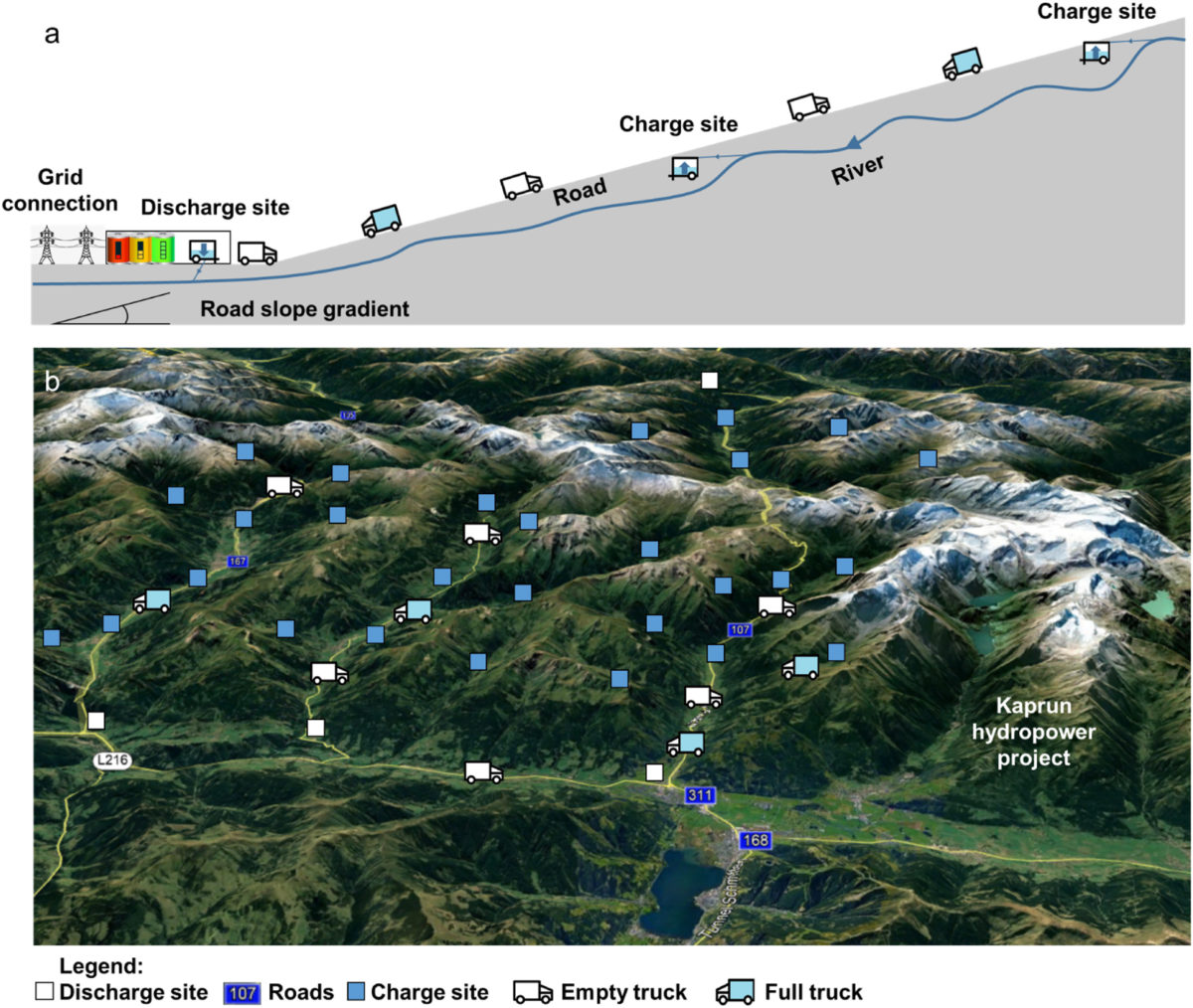An international research group led by Austria's International Institute of Applied Systems Analysis (IIASA) has developed an energy storage technique based on the use of electric trucks for hydropower generation at high altitudes.
“Electric truck hydropower” (ETH) involves the transport of water from small streams at high altitudes in electricity truck containers that can transform it into electricity via regenerative braking. Regenerative braking is an energy recovery mechanism that takes the wasted energy from the process of slowing down a vehicle and uses it to recharge batteries.
The system can reduce electricity consumption and also lower a vehicle's braking load. The scientists said the electricity stored in the vehicles via this process could be sold to the grid or used by trucks for transport purposes.
“The ideal configuration of the ETH system is in mountainous regions with steep roads, where the same electrical trucks can be used to generate hydropower from different sites. This increases the chances that there will be water available to generate hydropower and thus increases the capacity factor of the system,” the scientists said.
They added that the system would have a minimal impact on a river's aquatic life, as the water collected at high altitudes could be returned to the same river once the trucks have reached the bottoms of hills.
“The reservoirs of this system are containers parked close to a river stream on the mountain, which are filled up with water extracted from the river,” they said. “After the container is filled up, it is ready to be transported down the mountain and to generate hydropower.”
The system would include an electric truck, water containers, a charge site, and a discharge site. The truck driver would have to control the descending speed of the filled truck to produce electricity. After vehicles reach discharge sites and empty their tanks into rivers, discharged batteries could replace charged batteries to restart the cycle.
Popular content
“The battery is not fully discharged, as the truck requires energy to drive up the mountain with an empty container,” the researchers said. “The discharge site should have a robust connection to the national grid to allow the site to supply electricity to the grid.”
Some locations in the Andes or the Himalayas have the potential to generate 15 TWh per year through this technology, the scientists claimed.
“The continent with the highest potential is Asia with 617 TWh, South America with 466 TWh, Central America with 65 TWh, Europe with 56 TWh, Africa with 17 TWh, North America with 5 TWh, and Australia with 0.7 TWh,” they said. “The global potential for ETH is estimated to be 1226 TWh.”
They estimated the capex of ETH projects at between $200/kW and $500/kW, or $30/MWh to $100/MWh. Conventional hydropower plants would come in at $1,000/kW and $5,000/kW or $50/MWh to $200/MWh, they claimed.
“Given that the ETH system is already a competitive electricity generation alternative with existing technology, its cost is expected to further reduce with expected technological improvements in the near future,” the scientists said.
The academics presented their findings in “Electric Truck Hydropower, a flexible solution to hydropower in mountainous regions,” which was recently published in Energy. The group includes researchers from Wroclaw University of Science and Technology, the Federal University of Espírito Santo, the University of São Paulo, the Federal University of Rio Grande do Sul, Aalto University, Aarhus University School of Business and Social Sciences, the University of Oxford, and the Hamburg University of Applied Sciences.
This content is protected by copyright and may not be reused. If you want to cooperate with us and would like to reuse some of our content, please contact: editors@pv-magazine.com.



This seems a hugely costly way to generate energy. Substantial ongoing labor, equipment, road wear, and other costs for small output. Powering tons of vehicle uphill for roughly equivalent weight of water? Compounding efficiency losses? Using a battery that could capture off-demand solar or wind energy from those sunk-cost projects? The publication date surely was April 1st.